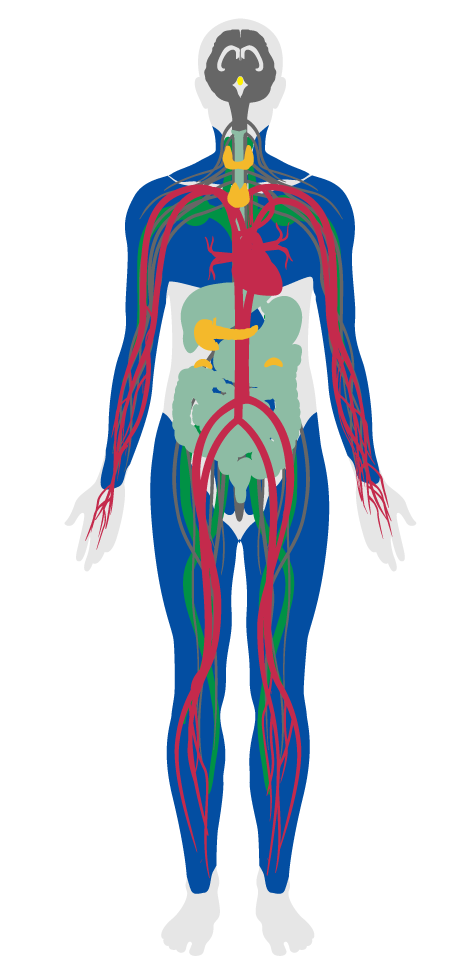Circadian lighting design
- 53 Visual lighting design
- 54 Circadian lighting design
- 55 Electric light glare control
- 56 Solar glare control
- 57 Low-glare workstation design
- 58 Color quality
- 59 Surface design
- 60 Automated shading and dimming controls
- 61 Right to light
- 62 Daylight modeling
- 63 Daylighting fenestration
- P2 Light at night
- P3 Circadian emulation
54. Circadian lighting design
To support circadian health by setting a minimum threshold for daytime light intensity.
Light is one of the main drivers of the circadian system, which starts in the brain and regulates physiological rhythms throughout the body’s tissues and organs, affecting hormone levels and the sleep-wake cycle. Circadian rhythms are kept in sync by various cues, including light which the body responds to in a way facilitated by intrinsically photosensitive retinal ganglion cells (ipRGCs): the eyes’ non-image- forming photoreceptors. Through ipRGCs, lights of high frequency and intensity promote alertness, while the lack of this stimulus signals the body to reduce energy expenditure and prepare for rest. The biological effects of light on humans can be measured in Equivalent Melanopic Lux (EML), a proposed alternate metric that is weighted to the ipRGCs instead of to the cones, which is the case with traditional lux. Tables L1 and L2 in Appendix C show how to calculate the EML of individual lamps and larger spaces.
At least one of the following requirements is met:
In all bedrooms, bathrooms, and rooms with windows, one or more fixtures provide the following:
Workplaces where employees spend most of their time in spaces with light levels limited by work type (such as restaurant servers or hospital ward workers) have break rooms which meet the following requirement:
At least one of the following requirements is met:

Applicability Matrix
| Core & Shell | New & Existing Buildings | New & Existing Interiors | |
|---|---|---|---|
| Part 1: Melanopic Light Intensity for Work Areas | - | P | P |
| Commercial Kitchen | Education | Multifamily Residential | Restaurant | Retail | |
|---|---|---|---|---|---|
| Part 1: Melanopic Light Intensity for Work Areas | O | O | - | - | - |
| Part 2: Melanopic Light Intensity in Living Environments | - | - | O | - | - |
| Part 3: Melanopic Light Intensity in Breakrooms | - | - | - | O | O |
| Part 4: Melanopic Light Intensity in Learning Areas | - | O | - | - | - |
Verification Methods Matrix
| Letters of Assurance | Annotated Documents | On-Site Checks | |
|---|---|---|---|
| Part 1: Melanopic Light Intensity for Work Areas | Architect | Spot Measurement | |
| Part 2: Melanopic Light Intensity in Living Environments | Architect | Spot Measurement | |
| Part 3: Melanopic Light Intensity in Breakrooms | Architect | Spot Check | |
| Part 4: Melanopic Light Intensity in Learning Areas | Architect | Spot Check |
| 54.4.b |
ANSI/IES RP-3-13 provides Table 3 for recommended maintained illuminance targets for the vertical plane stratified by observer age. Table 3b recommends a target value of 150 lux on the vertical plane in art studios for observers <25 years of age. |
| 54.1.b |
ANSI/IES American National Standard Practice for Office Lighting (RP-1-12) provides recommended maintained illuminance targets for various types of spaces by age group. For reception desks, RP-1-12 recommends a maintained target of 150 lux for ages 25-65. |
